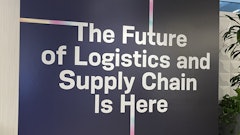
In an industry dictated by slim margins, food and beverage manufacturing cannot ignore the benefits of automation and robotics when it comes to streamlining processing operations. A recent Plex report indicated that only 21% of the operating budget across the food and beverage sector is reserved for technology. With increased economic challenges, such as inflation, supply chain disruptions, labor shortages and increased consumer interest in sustainability, the food processing industry must take a greater interest in the return on investment of robotics and automation and the benefits they can provide for increased quality and productivity.
Among macroeconomic challenges affecting manufacturing found in that same report, businesses also express a desire to improve quality, minimize costs, navigate supply chain disruptions and adapt to increased desire for sustainably sourced products. Reports indicate that by 2030 a number of sustainability-related regulations are expected to go into effect. These regulations, affecting food waste, food packaging and labeling are bound to complicate the business and operating environment of food processing. Reports also indicate that the industry will experience about 40,000 job vacancies a year, due to current employees transferring to different occupations or exiting the workforce. Additionally, the treatment of food safety in the United States is migrating from a reactive to a proactive approach with the latest regulations targeting ways to prevent foodborne illnesses as opposed to solely responding to instances of it. The Food Safety Modernization Act (FSMA), which went into effect in January 2023, gives businesses three years to comply with increased safety regulations aiming to prevent foodborne illnesses.
These trends and regulations indicate there will be an increased need to improve food processing quality and production, operationalize workflows to improve food traceability and decrease food contamination. Investment in technology that supports automation and robotics will advance food processing and create a more efficient and streamlined operation enterprise-wide. Automation improves consistency of execution, accuracy of reporting on yield and quality and reduction of labor costs. It also leads to improved overall equipment effectiveness, improving the amount of production capability being used by an organization.
Benefits of automation and robotics
The use of robotics leads to less food waste and increased quality of food processing, reduces the risk of injury, and reduces costs while improving efficiency. Robots decrease food waste by improving efficiency of the processing line, picking, packing and sorting items with greater speed than humans. Robots can perform tasks with greater speed, consistency and precision, improving the quality output of products. Where humans are prone to errors and mistakes after long hours on the manufacturing floor, robots can perform the same tasks with efficiency for hours on end without the risk of safety or injury.
Food manufacturers invested in automation and robotics are better positioned to thrive as the industry must increasingly adapt to economic and customer fluctuations and demands. Investment in automation and robotics allow organizations to weather economic challenges and increasing regulations. In addition to economic fluctuations and regulations, organizations invested in automation will increase their potential in the labor market, increasing talent acquisition and retention by catering to an emerging workforce fluent in technology. Businesses which fail to understand the advantages of leveraging automation will fall behind competitors.
Framing an automation-friendly environment
Connecting devices and software in an automated environment allows organizations to optimize production and improve quality. Through the integrated connection of assets and systems, organizations can improve automation processes by tracking operations and analyzing data. Building a connected enterprise with the Industrial Internet of Things (IIoT) creates a convergence of machines, networks and data, sharing and leveraging information to increase efficiency and improve productivity. This interconnected ecosystem streamlines production processes and improves product quality. The key components to increasing productivity though the connected enterprise are:
· Manufacturing execution system (MES) provides real-time visibility into production operations, enabling manufacturers to identify bottlenecks and track key performance indicators (KPIs).
· Quality management system (QMS) provides a central location for all data management, inspection management and automated workflows and traceability.
· Supply chain planning (SCP) connects machines, systems and data to help with production planning and scheduling, machine monitoring and optimization, predictive maintenance and process optimization.
Through task automation, improving visibility and enabling data-driven decision making, a connected enterprise facilitates the use of robotics and automation in food processing. Providing the appropriate technology to integrate operations, improving efficiency and supporting data-driven decision-making support automation and robotics to deliver cost efficiency, increased productivity and improved quality.
Not only do automation and robotics offset mundane and repetitive tasks, allowing skilled workforce to tend to greater operational needs and value-add processes, but it also helps attract the next generation of labor. Increasingly, successful manufacturing operations prioritizing automation will attract employees seeking an advanced digital environment. Automation also enables smoother navigation of supply chain disruptions and an integrated, automated system interconnects forecasts and predictions to dynamically adjust to changes. Automation creates an environment which can elevate accuracy, productivity and capacity utilization.

























